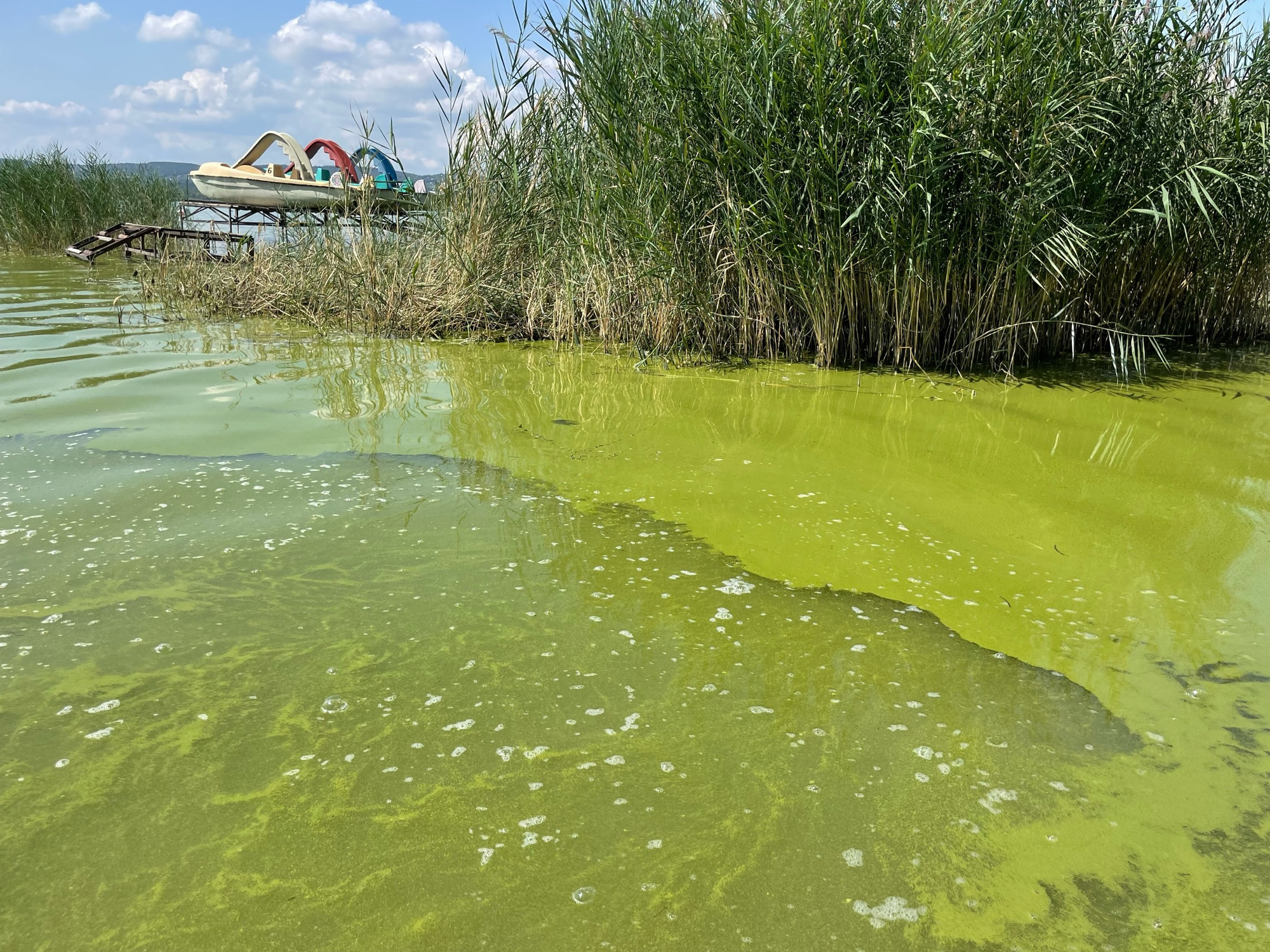Heatwave Does Not Cause Algal Blooms in Lake Balaton
Even in the most algae-prone areas of Lake Balaton, the amount of cyanobacteria, commonly known as blue-green algae, is currently well below the health safety threshold. According to researchers from the HUN-REN Balaton Limnological Research Institute (BLRI), sustained high temperatures will not lead to increased algae levels, and if the weather remains stable, no significant algal blooms are expected in the coming weeks.
Since early July, the heatwave has been intense, and the only real relief can be found at the water’s edge, especially in natural bodies of water. But what happens when daily maximum temperatures remain well above 30°C for the third consecutive week, and the water temperature of Lake Balaton consistently peaks around 30°C? Does the heatwave affect algae levels and water quality? We investigated this with BLRI algologists Boglárka Somogyi and Lajos Vörös.

Photo: HUN-REN BLRI
Just like us, algae have their favourite spots around Lake Balaton. Filamentous cyanobacteria prefer the western parts of the lake (the Keszthely Basin and the Szigliget Basin—these are generally the most algae-prone areas of Balaton during the summer), while in the clearer waters of the Siófok Basin, dinoflagellate Ceratium species dominate.
Although blue-green algae are most abundant in the lake during the summer, their levels are well below the threshold for health risks. The World Health Organization (WHO) defines the safety level for bathing in recreational lakes with cyanobacteria (blue-green algae) dominance as 75 micrograms per litre of chlorophyll-a. "In the most algae-prone area of Lake Balaton, this value is currently around 20 micrograms per litre, which is well below the health safety threshold. Fortunately, the harmless Ceratium species are now the dominant organisms in the western part of the lake," said BLRI researcher Boglárka Somogyi.
In most of our lakes, algal growth is determined by the amount of phosphorus in the water, which mainly comes from the catchment areas (this also applies to Lake Balaton). However, some of the phosphorus accumulated in the lake sediments can also be released, leading to unwanted algal blooms. "Whether the increase is due to external or internal nutrient loading, algae can proliferate in large quantities under favourable weather conditions," added Lajos Vörös.
As the entire water mass of Lake Balaton is currently uniformly around 28-30°C, thermal stratification is not expected, and consequently, no algal blooms are anticipated in the next week or two. "Naturally, a longer-term forecast is not possible," the researcher added.
What can we do to prevent algal blooms? One solution is to reduce external phosphorus loading. According to BLRI researchers, large-scale efforts to reduce Lake Balaton’s external phosphorus load have been successful. "However, these systems need to be continuously maintained, operated, and improved," they added.
Algal blooms only pose a health risk if the algal biomass exceeds the health safety threshold. Mild cases may cause skin irritation or conjunctivitis, while more severe cases can result in vomiting and diarrhoea. For children and more sensitive adults, showering after bathing in natural waters can help prevent unpleasant symptoms.
Although algal blooms may not be Instagram-worthy and skin irritations from algae might not be Facebook-worthy, the photosynthesis of floating microscopic algae is energetically vital to the ecosystem of any large standing water body, including Lake Balaton. Therefore, these algae are crucial for sustaining aquatic life. However, due to increased external phosphorus loading from human activities, excessive algal growth can degrade water quality (increased turbidity, unpleasant odours, and potential health risks).
Although algae can sometimes make the water in the western parts of Lake Balaton appear murkier and even grass-green, it is not the algae that give the lake its characteristic colour. Instead, the beautiful turquoise hue of the lake’s clearer areas is due to the light scattering off microscopic calcium crystals. "During storms, however, the water can turn grey because the swirling sediment consists of 98% minerals," the researchers add. In the Keszthely Basin, dissolved coloured organic matter (known as humic substances) from the Kis-Balaton Water Protection System often causes the water to appear brown.

